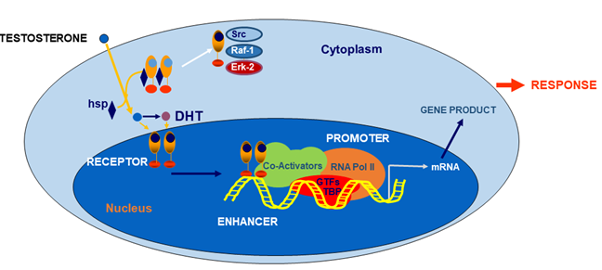
Figure 6. Simplified model of androgen action in an androgen target cell. The androgen receptor (AR) binds testosterone or its active metabolite DHT. After disassociation of heat shock proteins (hsp) the receptor enters the nucleus via an intrinsic nuclear localization signal and binds as a homodimer to specific DNA elements present as enhances upstream of androgen target genes. The next step is recruitment of coactivators, which form the communication bridge between the receptor and several components of the transcription machinery. The direct and indirect binding of the androgen receptor with several components of the transcription machinery (e.g., RNA polymerase II (RNA Pol II), general transcription factors (GTFs)) are key events in nuclear signaling. This communication triggers subsequent mRNA synthesis and consequently protein synthesis resulting in androgen responses. A non-genomic pathway involving the AR via cross-talk with the Src/Raf-1Erk-2 pathway is also known.
